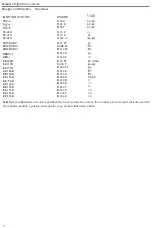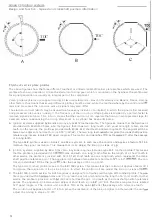
Group
28
Ignition systems
Design and function - General
General
c
B
o
A
Function of ignition system; combustion theory in brief
Correct ignition tim
i
ng
A
.
The function
of
the
ignition system is to
ignite
the
compressed
fuel/air mixture
in
each cylinder at exactly
t
he cor-
re
c
t
instant
.
Ignition
is followed by
the
propagation
o
f a
flame
fr
ont
through the combustion chamber until
the
com-
plete
c
h
arge
ha
s
been
burned.
The
combustion pressure.
whi
c
h
is higher
than
that
of
the
comp
r
essed mix
t
ure, gen-
erates a
high f
orce
whi
c
h drives the
pis
t
on downwards in
the
cylinder. (
A
l
thou
gh
a proportion of
the
energy released
is
converted into mechanical work by
the
crankshaft, most of the energy
in
the fuel
(approx.
is dissipated in
the
form
of cooting losses, exhaust gas
losses and
mechanical losses
.)
To
ensure
that the
igni
ti
on
timing
as close as possible to the
'co
rrect
'
setting
under all
runn
i
ng
conditions,
the tim-
ing must be adjusted
continuously
to take account
of variations in
the
conditions.
In
other
words
,
the
optimum
tim-
i
ng
is not a fixed sett
i
ng for
each
eng
i
ne
,
but
varies
with factors
such as engine speed, load,
fuel
/
air ratio
and
temper
-
ature
.
Furthermore
,
the t
i
m
i
ng may
be ad
jus
ted for
optimum comfort, maximum
torQue
or maximum
power as ap
-
propriate
.
In
the
rest of
this
discussion
,
the term
optimum
tim
i
ng
shall be
taken to mean
a setting
which takes
account
of all the
factors
influenced by the
ignition.
In
other words
,
it
is
a
compromise
between the
demands
of high power
,
low
fuel
consumption and
the
cleanest
possible exhaust emissions. The
emergence of ever-stricter
emission
s
tandards
has
been the
main factor
in
the
development
of igni
t
ion
systems designed
to
optimize the
combus
t
ion
process under all
running
condi
t
ions.
Earlv ignition
B
.
Early ignition prevents
efficien
t
expansion
of
the fuel
/
air
mixture since
the
piston
is s
ti
ll
travelling upwards to-
w
ards
TOC
as
the
pressure
r
ise
occurs, generating an abnormally high pressure accompanied by an excessive tem-
perature
rise
.
As
a
consequence
of
ignition,
part
of
the
unburnt
fuel
/a
ir mixture may
i
gnite
spontaneously,
causing
the
engine to knock
.
In general, early
ignition also
has an adverse
effect on
the exhaust
emissions.
The
Quantity of unburnt hydrocarbons
(
HC
)
increases, while the pressure and temperature rises
cause
the
nitrogen in
the trapped a
i
r to react w
i
th the
oxygen
to
fOfm
greater
quantities
of nitrogen monoxide
(NO)
and nitrogen dioxide
Of
NO
oxides of
nitrogen)
.
9


























